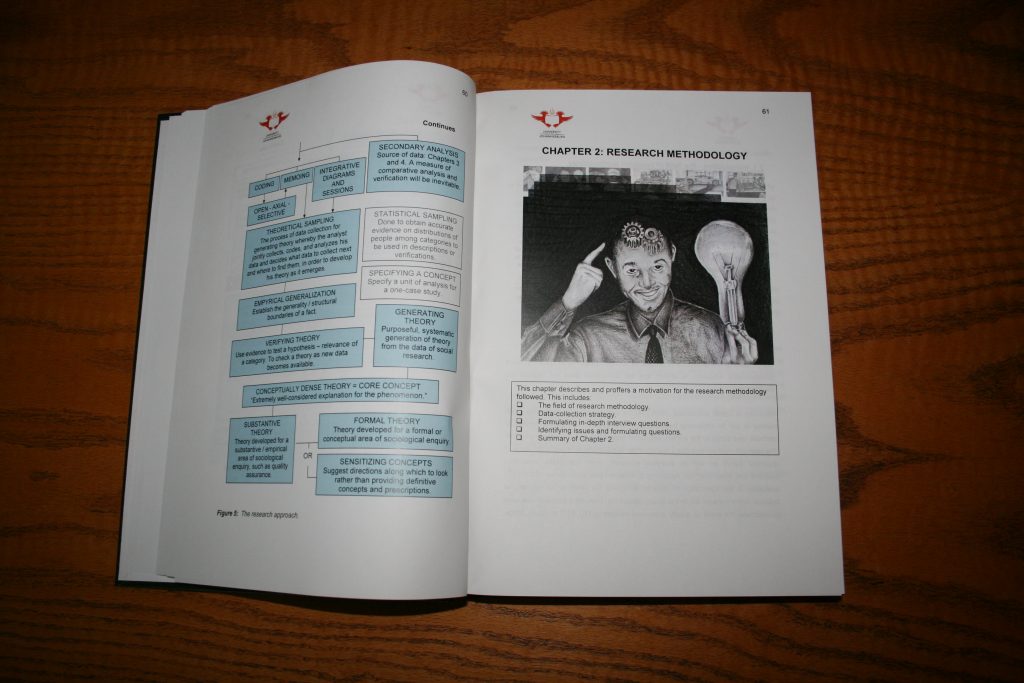
Introduction
For my first doctoral study, I used a quantitative method, specifically CHAID supported with loglinear analysis and the CATMOD procedure. I chose this statistical method because I intended to send out many questionnaires. I had to ask for the assistance of the statisticians of the South African Council for Social Research to process my completed questionnaires because I did not have the software or knowledge to do the work.
Of course, I had to analyse the printouts of the processed data myself, else I would not have been able to come to any conclusions, findings or suggested solutions to my research problem.
In retrospect, I was walking on thin ice by making use of a statistical process about which I knew absolutely nothing.
In this article, I will share with you an introduction to research methods.
Most of the methods that I will discuss should be used with qualitative research, although some can also be used with quantitative research.
All research methods can be used with a mixed approach.
The challenge with quantitative research methods is that they are often dedicated to a specific scientific field of study rather than to a research method.
They often also deviate from the generally accepted structure of a Ph. D. Research Report.
Therefore, I will only share a few remarks on statistical research methods in general rather than to try to discuss research methods that are used in a specific natural science field.
Research methods overlap with research paradigms and data collection methods. I will discuss them separately in future posts.
Mixed research methods
Research on doctoral level is becoming increasingly diverse and inclusive of both qualitative and quantitative research methods.
That is one of the reasons why a mixed-method approach is often followed.
Another reason why students decide to follow a mixed-method approach is because they feel that a combination provides a better understanding of a research problem than just focusing on qualitative or quantitative research methods.
Some students argue that a mixed-method enhances the validity and accuracy of data and the relevance and value of research findings.
The overarching premise is that the integration of two or more methods should facilitate the achievement of research objectives.
The decision of whether to integrate multiple methods depends on a combination of the research objectives, the resources and time available, your philosophical assumptions, your knowledge of research methods and your style or personal preferences. The people who will read your research report, especially your sponsor, but also your study leader and the external examiners, will also have an influence on which research method or methods you will use.
Different methods can be used as a form of triangulation in the hope that the findings from the different methods will corroborate one another.
Where will you discuss the research method that you will use?
You will probably discuss the research method that you will use in the second chapter of your dissertation or thesis.
You should explain:
- The method that you will use without trying to “teach” you study leader or other readers the intricacies of research. They probably know more about this than you.
- Why you chose the method.
- The reason why you chose the method.
You should also provide a detailed description of the components of the methodology of your choice.
The method that you choose must enable you to progress from a problem situation to a solution.
As far as possible you should do as much of the work as possible on your own.
For my second doctoral study, I used Atlas.Ti to code an analyse the data that I collected, mostly through interviewing. I used grounded theory, which is a qualitative research method. This time around I attended a short course on Atlas.Ti at the University of Guildford in Surrey before embarking on my studies, so that I could do all the work on my own.
Your method or methods can consist of a combination of literature study, models, arguments, mathematical proofs, surveys, case studies, experimentation, etc.
Did you notice that I am integrating research methods with data collection methods here?
The chapter on your research methods is mostly not difficult to write.
After all, you will have all the information from a book or books that you consulted.
Even better, your study leader can suggest a method that will work well with the nature of your research.
In addition to the purpose of your research, you should also consider your knowledge, experience, strong points, and weak points and the data that you will have access to.
Don’t choose a quantitative method if you feel uncomfortable with calculations and statistics or if you do not have access to laboratories or other scientific equipment that you will need.
Don’t choose a qualitative method if you will not have access to or feel comfortable with people as your target group.
Summary
You will probably use quantitative research methods if you feel comfortable with figures and statistics, if you have access to the laboratories or other scientific equipment that you will need for your research and if the topic of your research is such that it can be investigated quantitatively.
You will probably use qualitative research methods if you feel comfortable when working with people, when the topic of your research is suitable for qualitative research if you need to solve immediate social or community problems.
You will probably use mixed research methods if there is a need to collect and analyse quantitative and qualitative data.
You can use more than one research method, and some of them might be quantitative while others are qualitative in nature. Different methods can be used as a form of triangulation, which should give you a measure of corroboration of your data and findings.
Keep in mind that research methods, paradigms, data collection methods, and data analysis methods are all parts of the research process.
You will probably discuss the research method that you will follow in the second chapter of your research report. Although it is an important chapter, you should not go into too much detail.









